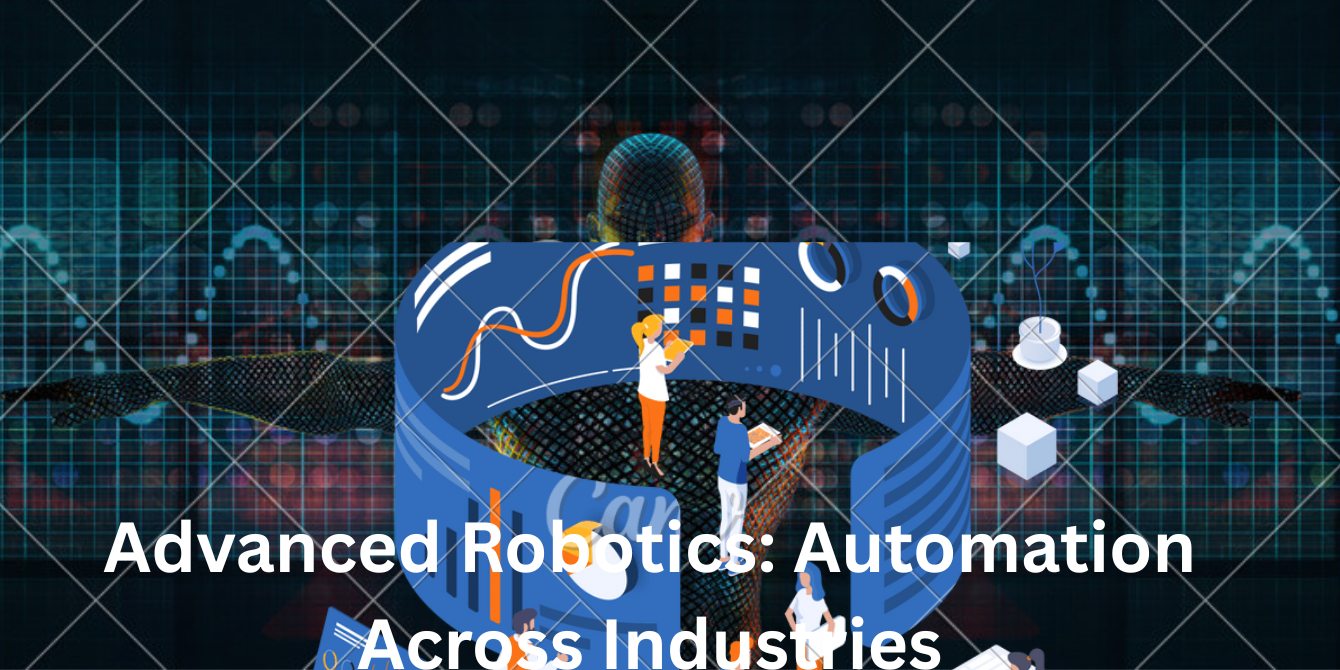Advanced Robotics: Automation Across Industries In recent years, advanced robotics has emerged as a transformative force across various industries, revolutionizing traditional processes and enhancing operational efficiency. From manufacturing floors to healthcare facilities, the integration of sophisticated robotic systems is not only streamlining tasks but also redefining the roles of human workers.
The Rise of Advanced Robotics
Advanced robotics encompasses machines equipped with enhanced sensors, artificial intelligence (AI), and machine learning capabilities, enabling them to perform complex tasks with minimal human intervention. Unlike their predecessors, these robots can adapt to dynamic environments, learn from experiences, and collaborate seamlessly with human counterparts.
Transformative Applications Across Industries
Manufacturing
In the manufacturing sector, robots have transitioned from performing isolated tasks to taking on more integrated roles within production lines. Companies like Richtech Robotics are leading this transformation by deploying robots such as Medbot for medical deliveries and Titan for handling heavy payloads. These innovations have resulted in over 300 robots being deployed across the U.S., significantly enhancing productivity and safety in manufacturing environments.
Logistics and Warehousing
The logistics industry is witnessing a surge in the adoption of humanoid robots to optimize warehouse operations. GXO Logistics, for instance, is piloting robots from Agility Robotics, Apptronik, and Reflex Robotics to perform tasks such as moving containers and recycling materials. These robots are designed to work alongside human employees, improving efficiency and reducing the physical strain associated with manual labor.
Healthcare
In healthcare, robots are being utilized for tasks ranging from patient monitoring to surgical assistance. Collaborative robots, or “cobots,” are increasingly prevalent, assisting medical staff with patient handling and rehabilitation. These robots can monitor vital signs, deliver medication, and support physical therapy, thereby alleviating the strain on healthcare systems caused by aging populations and workforce shortages.
Automotive
The automotive industry is integrating advanced robotics to enhance driver assistance technologies. Horizon Robotics, in partnership with Volkswagen, is developing smart driving solutions by incorporating AI-driven systems into vehicles. This collaboration aims to improve vehicle safety and autonomy, marking a significant step forward in automotive innovation.
Also Read-Terahertz Communications: The Backbone of 6G Networks
Emerging Trends in Robotics Automation
Artificial Intelligence Integration
The fusion of AI with robotics is enabling machines to process and analyze vast amounts of data, allowing for predictive maintenance and self-optimization. This integration enhances the robots’ ability to manage variability and unpredictability in their operating environments.
Collaborative Robots (Cobots)
Cobots are designed to work safely alongside humans, enhancing productivity without replacing human labor. Their flexibility and ease of integration make them ideal for various applications, from assembly lines to patient care.
Robotics-as-a-Service (RaaS)
The RaaS model allows companies to lease robots rather than purchasing them outright, lowering the barrier to entry for automation. This approach provides businesses with the flexibility to scale operations and adapt to changing market demands without significant capital investment. (Advanced Robotics: Automation Across Industries)
Challenges and Considerations
While the benefits of advanced robotics are substantial, several challenges remain:
- High Implementation Costs: The initial investment for advanced robotic systems can be significant, posing a barrier for small to medium-sized enterprises.
- Workforce Displacement Concerns: The automation of tasks traditionally performed by humans raises concerns about job displacement and the need for workforce reskilling.
- Technical Limitations: Despite advancements, robots may still struggle with tasks requiring fine motor skills or complex decision-making that humans perform intuitively.
Conclusion
The integration of advanced robotics across various industries is driving unprecedented levels of efficiency, safety, and innovation. As technology continues to evolve, businesses must navigate the challenges of implementation while embracing the opportunities that robotic automation presents. By doing so, they can position themselves at the forefront of this transformative era, leveraging robotics to enhance operations and deliver greater value to their stakeholders.
